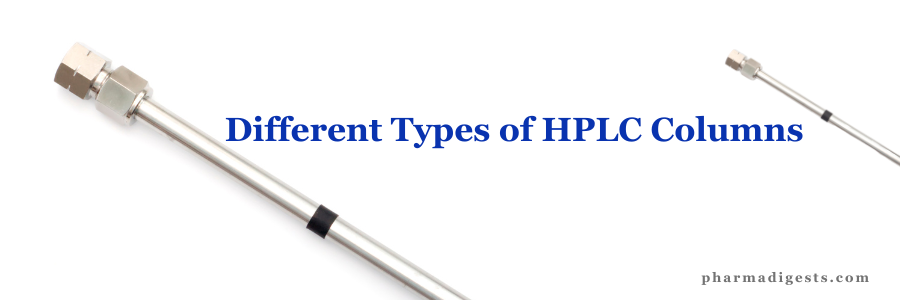In High-Performance Liquid Chromatography (HPLC), the choice of column is crucial for successful separation and analysis. Let’s explore the different types of HPLC columns:
Normal Phase HPLC Columns
Stationary Phase: These columns have a more polar stationary phase than the mobile phase. Silica gel, a polar material, is commonly used as the packing material.
Mobile Phase: Methylene chloride, hexane, chloroform, or mixtures of these with diethyl ether are used.
Application: Separation occurs based on the polarity of sample components. Silica columns are widely used in pharmaceutical analysis.
Reverse Phase HPLC Columns
Stationary Phase: These columns have a non-polar or less polar stationary phase compared to the more polar mobile phase. Bonded hydrocarbons like C8 and C18 are common.
Mobile Phase: Aqueous organic solutions such as water-methanol or water-acetonitrile mixtures.
Application: Reverse phase chromatography separates sample components based on their polarity, opposite to normal phase columns.
Ion Exchange HPLC Columns
Stationary Phase: These columns are used for compounds that easily ionize. The stationary phase contains ionizable groups.
Mobile Phase: Usually an aqueous solution of a salt.
Application: Analyzing ionizable samples and large biomolecules.
Column Dimensions
The most common HPLC column has an internal diameter between 2.1 mm and 4.6 mm and a length between 30 mm and 300 mm.
Particle size (usually 2-10 µm) and pore size are also critical factors in column efficiency.
Common Reversed Phase Columns
- C18 Columns: These are the most popular due to their wide hydrophobic separation power and large surface area coverage.
- C8 Columns: Used when less retention than C18 is needed.
- C4 and C5 Columns: Suitable for separating large macromolecules like proteins.
Remember, selecting the right HPLC column depends on your specific application, solute properties, and method requirements. Experimentation and understanding column characteristics are key to successful separations.
Read also:

